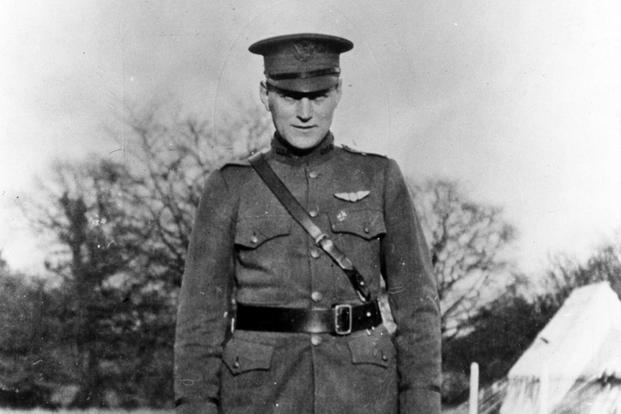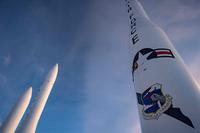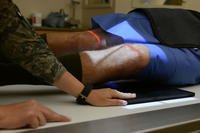Major John Cassell Henderson
"... the most soothing thoughts came to mind in the memory of a man I recalled from WWI."
Written November 1968 by Major John Cassell Henderson the day prior to undergoing major surgery. Critically ill and contemplating that the end may be near, he wrote this letter to his family reflecting back to a hero named Harold Goettler who gave his life at a young age without a thought. Here is what he wrote:
At one point, the day before the operation, during my recent visit to the hospital, my resistance ebbed to a very low point. Perhaps, my time was up, flashed faintly through my mind. But strangely enough, at the same time, the most soothing thoughts came to mind in the memory of a man I recalled from World War I. Here's the story.
August 23, 1917. I arrived as an aviation cadet at Champaign, Illinois. I was pleasantly surprised to meet several fellows who I knew from the University of Chicago, reporting for duty in this exciting new adventure the same as I. One in particular was Harold Goettler, a big fine specimen of a man, whose personality and appearance stood out in any group. He was a 3 letter football man at the University and also most popular on the campus in student activities.
Later we proceeded to Canada and Fort Worth with the RFC. Then on the Olympic to England. After arriving in England they split-up the group and sent us to various fields for further flying instructions. Goettler and I were sent to a small field in Norfolk, where we remained together during our entire stay. Except for 5 other American officers, we were thrown in with 100 or so Britishers. Goett and I reported to the Commanding Officer, an Englishman, trim from the tips of his waxed mustache to the toes of his polished boots, who greeted us most cordially and conducted us personally on a tour of the station, before assigning us to the room Goett and I shared during our entire stay. After the austere treatment we had endured, a hot cup of tea, and valet service in the best British style in all our personal needs, convinced us that, although we were still neophytes as military pilots, as officers and gentlemen, we had-it-made.
Strangers, both American and British, immediately accepted and recognized Goett as something special. The red carpet seemed to roll out for him wherever he went. I couldn't help but notice this, for any favorable attention I got from strangers I had to earn, and that came slowly and gradually.
As I became more closely acquainted with Goett, in spite of his great popularity I found him to be most considerate of his fellow man, and had an inborn instinct of knowing exactly the right thing to do in any situation. When time came to leave this base he had gained the close personal friendship and admiration of all with who he had come in contact.
I saw him several times at brief intervals in France, before we both wound-up on the front in different squadrons. After the Armistice, I was saddened to learn that he had been shot down and killed by ground fire while dropping supplies from a DH4 airplane to some US Infantry, trapped in a valley, and surrounded by the Germans. The US gave him, posthumously, their highest military award, the Congressional Medal of Honor.
Thus, at the age of 24, life ended for a man who had the physique, education, personality and character that would have carried him to the top in any line of civilian endeavor he might have chosen. And here am I, still here after struggling through 77 years, and still struggling, perhaps not quite so hard lately.
Nature deals life and death in her own way, so when Gabriel blows his horn, I'm ready. Better men than I have gone long before me. But as long as I'm still here, I'll try to look at it as Jackie Gleason might say, "How Sweet it Is."
John Cassell Henderson did survive this surgery and lived an active life until his passing in 1984. He was interred in Arlington National Cemetery. (1891-1984)
The photos included here are from a personal photo book he compiled during WWI. His own handwriting is beneath the photo for documentation, though difficult to see.















